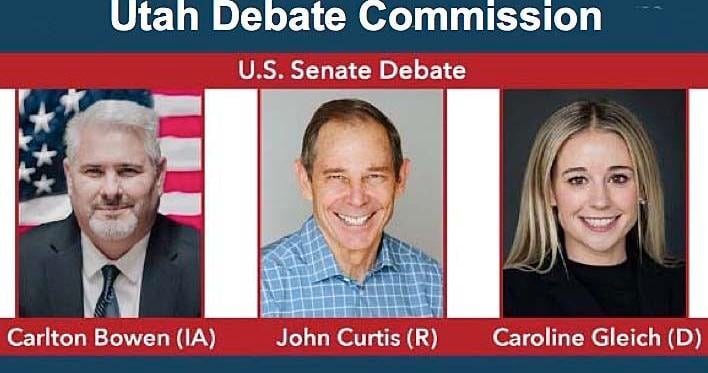
OGDEN – The candidates in the running for the seat in the U.S. Senate now occupied by Mitt Romney (R-UT) disagreed on many topics during their debate on Oct. 10 at Weber State University in Ogden, but none so sharply as the issue of public lands in Utah.
“Right now, our federal lands are under attack through a massive effort to transfer our federally protected public lands to state control,” according to outdoor activist Caroline Gleich, the Democratic candidate.
“We know that when that happens, (those lands) are usually sold to the highest bidder for energy development, for mineral extraction and so politicians can line their pockets with profits from those sales, closing those lands forever.”
Independent candidate Carlton E. Bowen differed entirely from Gleich’s sentimental attachment to public lands, promising to re-write the Antiquities Act if he is elected to the Senate.
The federal government controls nearly 70 percent of the land in Utah. About 18.8 million acres are comprised of areas dedicated to national parks, monuments and other federal designations. Another 18.5 million acres are controlled by the Bureau of Land management, a claim that Utah is challenging in a lawsuit filed in the U.S. Supreme Court in August.
Under authority granted to the U.S. president by the Antiquities Act of 1906, Bowen said former Presidents Bill Clinton created the Grand Staircase National Monument in 1996 and Barak Obama set aside the Bear Ears National Monument in 2016. Both areas, which constitute 1.87 million acres and 1.36 million acres respectively, are considered to be sacred to Native Americans, including the Navajo, Hopi, Ute and Pueblo tribes.
From a traditionalist’s point-of-view, Bowen considers both of those actions to have been an abuse of presidential power.
“These monuments lock up public roads and private lands within their boundaries,” he says, arguing that the Antiquities Act needs to be revised to avoid such abuses.
With the experience of his years in Congress, U.S. Rep. John Curtis (R-UT) says that’s easier said than done, however.
“The right relationship (between the federal government and state authorities) is illustrated by the Emory County Public Lands Act,” Curtis says.
Originally co-sponsored by Curtis and the late Sen. Orrin G. Hatch, the 2018 law is considered a model for how Utahns can work together to solve public land management questions in some of the most unique areas of the country.
After years of input and stakeholder engagement, this bill resolved a number of access and use issues, while establishing more than 1 million acres of permanent conservation, including wilderness designations, a national monument and a national conservation area.
“That law took 1.3 million acres of public land and designated where we would graze, where we would recreate, where we would extract and what we would protect,” Curtis boasts.
“That’s the only way it works,” he added, “through establishing consensus between environmental groups, ranchers and off-road enthusiasts. It actually trumps the Antiquities Act.”
But Gleich insists that Utah’s public lands are treasures that must be protected.
The Democrat confessed that she had struggled with anxiety and depression while growing up and credited her time spent on Utah’s federally protected public land for providing happiness and healing.
“These lands are places where we should be able to go to find that joy and refreshment,” she emphasizes.
During their debate, the candidates also differed in their proposed approaches to dealing with issues like the national debt, housing affordability, water and growth.

